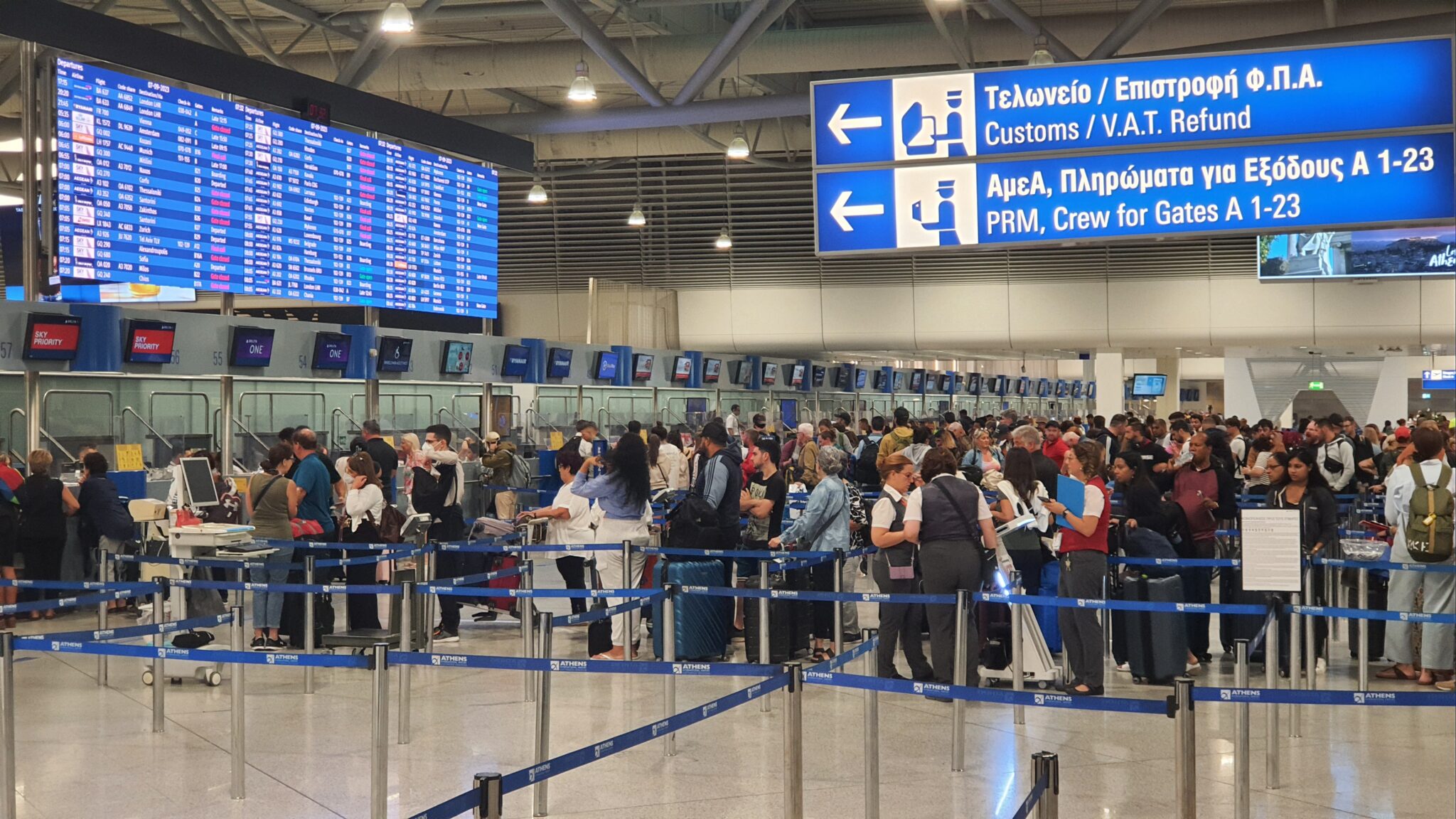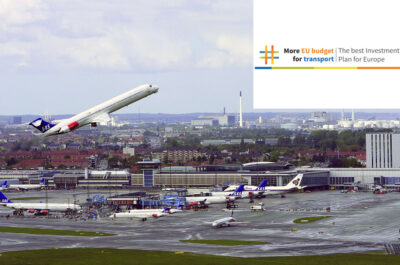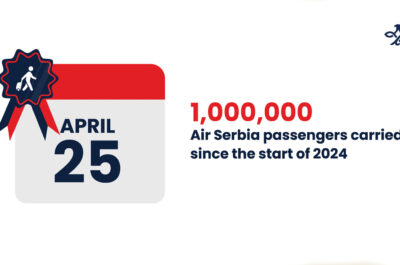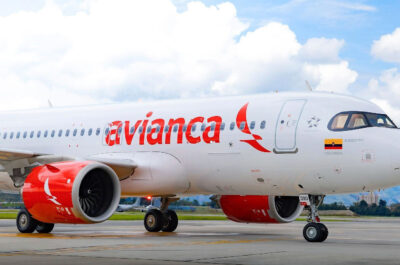
Within the EU+ countries market, the best performances came from relying on incoming tourism and VFR traffic: Iceland (+25%), Greece (+21%), Slovenia (+20%) and Portugal (+16%).
BRUSSELS – ACI Europe today released its air traffic report for October 2023. Passenger traffic across the European airport network continued to defy inflated air fares and geopolitical tensions in October – with an increase of +11.7% compared to the same month last year. This resulted in volumes standing at just -1.7% below pre-pandemic levels (October 2019).
Olivier Jankovec, Director General of ACI Europe said: “The momentum towards a full passenger traffic recovery for Europe’s airports kept going strong in October – defying both air fares up by +36.3%1 and the conflict in Israel adding further geopolitical tensions. Leisure, VFR and to a lesser extent blended travel were key demand drivers, extending dynamics normally associated with the peak Summer months into the autumn. At the same time and while still below where it used to be, business travel also contributed to getting Europe’s airports almost back to their pre-pandemic volumes.”
“However, this on-going traffic momentum did not benefit all airports equally. There is no doubt that Europe has become a fragmented and multi-speed airport market when looking at passenger traffic performance. This reflects structural changes which only reinforce competitive pressures upon airports.”

EU+ Market & International Traffic Outperforming
Airports in the EU+ market2 led the growth dynamic, with passenger traffic expanding by +12.6% (vs. October 2022). Meanwhile, those in the rest of Europe3 saw their growth slowing down to +7%. This largely reflected the impact of the conflict in Israel which erupted on 7 October, and which resulted in airports in the country seeing passenger volumes decreasing by -40.8% over the full month.
As a result, when compared to pre-pandemic levels (October 2019):
- EU+ airports came closest ever to a full recovery in passenger traffic at -1.3%. Remarkably, international passenger traffic in the bloc nearly all recovered (-0.1%) compared to domestic traffic (-7.1%).
- Airports in the rest of Europe remained further behind at -3.8% – reversing previous gains which had seen them achieving a full recovery in Q3.
National Markets & Performance Gaps
As in previous months, performance gaps amongst national markets remained significant – reflecting geopolitical tensions as well as demand dynamics dominated by leisure & VFR4 and driven by selective Ultra-Low Cost Carrier expansion.
- Accordingly, the best performances came from airports in emerging aviation markets boosted by traffic shifts resulting from war in Ukraine – such as Uzbekistan (+139%), Armenia (+66%) and Kazakhstan (+51%), and/or by Ultra-Low Cost Carrier stimulation – such as Albania (+134%).
- At the other end of the spectrum and apart from Ukraine which has lost all commercial air traffic since February 2022, airports in Israel (-49%), Finland (-32%), Sweden (-22%), Slovakia (-20%) and the Czech Republic (-18%) remained the farthest from a full recovery.
Hubs and other Larger Airports Progressing
Passenger traffic at the Majors (top 5 European airports) grew by +14.6% in October compared to the same period last year, but still remained –5% below their pre-pandemic levels (October 2019).
London-Heathrow (+18.1% vs. Oct 2022 | -0.5% vs. Oct 2019) further reinforced its position as the busiest European airport. The British hub was followed by Istanbul (+11.2% vs. Oct 2022 | +6.9% vs. Oct 2019), Paris-CDG (+10.5% vs. Oct 2022 | -10% vs. Oct 2019), Amsterdam-Schiphol (+18.5% vs. Oct 2022 | -9.5% vs. Oct 2019) and Frankfurt (+14.9% vs. Oct 2022 | -11.9% vs Oct 2019).
Amongst other large airports, Manchester (+5.1%), Rome-Fiumicino (+0.6%) and Zurich (-0.1%) achieved a full recovery in October – joining those who had already done so over the peak Summer months: Athens (+18.9%), Palma de Mallorca (+12.4%), Paris-Orly (+11%), Lisbon (+9.5%), Istanbul-Sabiha Gökçen (+6%), Dublin (+4%) and London-Stansted (+3.7%).
Regional Airports Well Above Pre-pandeic Volumes
Regional and smaller airports5 kept exceeding their pre-pandemic passenger traffic volumes in October by an impressive +9.1% – reflecting the above mentioned demand dynamics.
However, there were substantial variations in performance among regional airports, with those with less than 1 million passengers per annum remaining below pre-pandemic levels (-1.1%).
It was mostly regional airports serving popular tourist destinations and/or relying on Low-Cost Carriers that saw passenger volumes exceeding pre-pandemic levels – with some posting impressive results, including: Trapani (+259%), Perugia (+170%), Kutaisi (+83%), Burgas (+73%), Memmingen (+57%), Funchal (+52%), Zakynthos (+50%), Lodz (+46%), Menorca (+40%) and Kerkyra (+38%).
Aircraft Movements
Amongst the top 10 European airports for freight traffic, the best performances in October when compared to pre-pandemic volumes came from: Milan-MXP (+19%), Istanbul (+15.2%), Madrid (+12.3%), Liège (+5.4%) and Leipzig-Halle (+4.7%).
Aircraft movements increased by +8.7% in October across the European airport network compared to the same period last year, and remained –4.5% below pre-pandemic (October 2019) levels.
Data by Airport Groups
Throughout October, airports welcoming more than 25 million passengers per year (Group 1), airports welcoming between 10 and 25 million passengers (Group 2), airports welcoming between 5 and 10 million passengers (Group 3), airports welcoming between 1 million and 5 million passengers per year (Group 4), and airports welcoming between 100.000 and 1 million passengers (Group 5) reported an average change in passenger traffic of -4.5%, -8.1%, +13.2%, +6.3% and -1.1% – as compared to their pre-pandemic (October 2019) levels.
The airports that reported the highest increases in passenger traffic (vs October 2019) are as follows:
- Group 1: Athens ATH (+18.9%), Palma de Mallorca PMI (+12.4%), Paris ORY (+11.0%), Lisbon LIS (+9.5%), Istanbul IST (+6.9%).
- Group 2: Porto OPO (+21.1%), Málaga AGP (+18.2%), Naples NAP (+17.4%), Catania CTA (+17.0%), Milan BGY (+16.6%).
- Group 3: Milan LIN (+568.8%), Sochi AER (+125.2%), Almaty ALA (+52.6%), Astana NQZ (+49.6%), Belgrade BEG (+32.2%).
- Group 4: Tirana TIA (+133.7%), Burgas BOJ (+72.9%), Yerevan EVN (+65.9%), Memmingen FMM (+57.1%), Vrellë/Lipjan PRN (+56.1%).
- Group 5: Trapani TPS (+259.2%), Perugia PEG (+169.6%), Porto Santo PXO (+139.6%), Samarkand SKD (+139.1%), Kutaisi KUT (+83.1%).
2 EU, EEA, Switzerland, and UK.
3 Albania, Armenia, Belarus, Bosnia & Herzegovina, Georgia, Israel, Kazakhstan, Kosovo, Northern Macedonia, Moldova, Montenegro, Russia, Serbia, Turkey, Ukraine, and Uzbekistan.
4 Visiting Friends and Relatives.
5 Airports with less than 10 million passenger per annum (2019).
Theodore is the Co-Founder and Managing Editor of TravelDailyNews Media Network; his responsibilities include business development and planning for TravelDailyNews long-term opportunities.



























































































































































































